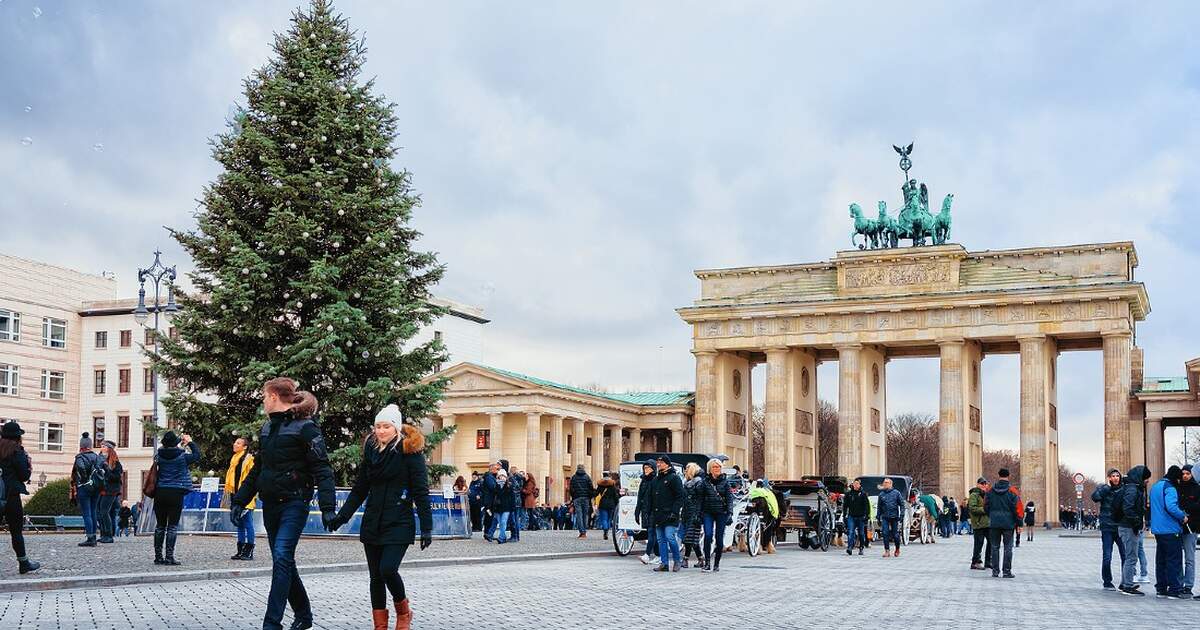[ad_1]
It’s time again to decorate the halls and hang up the mistletoe ready for the upcoming Christmas season.
Origin of the Christmas tree
The undisputed king of Christmas decorations, the Christmas tree, appears in hallways and living rooms around the world, crowned with a star, angel or other type of decoration, depending on the preference of each household.
But how did this strange practice of bringing trees into the home to adorn them with an array of tinsel, lights, and ornaments became the norm around the world? The story begins right here, in Germany.
The German tradition of Christmas trees
While evergreen trees had a special meaning in winter for people all over the world and decorating houses in cold winter weather was a common practice long before Christianity, the first Christmas trees to celebrate the holiday in Germany were made sometime around the 1500s.
The story goes that in 1510 a group of German merchants who were members of a guild called the Brotherhood of the Blackheads set up and lit a spruce tree in front of their headquarters to celebrate the birth of Jesus. Since then, the tradition spread across Germany, and every year from the mid to late 16th century, trees were placed in town squares across the country, decorated with paper flowers and pretzels, and burned each year to celebrate the holiday.
The 16th century Protestant reformer Martin Luther is often credited with establishing the tradition in Germany, although records show that the first trees did not appear in the country until years after his death in 1546. Even so, legend has it that Luther came up with the idea in 1536 while walking through a pine forest and the light from the stars glittered through the trees.
Germans brought Christmas trees to America, England, and France
As the Christmas tree craze spread in Germany, the trend began to spread to the rest of the world. German settlers in Pennsylvania brought the trees to America, while Queen Victoria’s German husband Prince Albert is believed to have exported the trend to Britain; shortly thereafter, Christmas trees were all the rage among the British upper class. The Duchess of Orleans from Mecklenburg-Western Pomerania is said to have brought the Christmas tree tradition to Paris with a similar royal connection.
Christmas tree balls or Christmas decorations that are used to decorate trees also have German origins. The first glass spheres were made in Thuringia between 1550 and 1609. Years later, in the 1850s, German scientist Justus von Liebig added a silver nitrate solution to silverplate the spheres and give them a shiny, reflective appearance so that painters can paint intricate designs on afterwards.
Over time, and as Christmas trees became international, the traditional way of decorating trees changed from a quintessentially German affair with pretzels and nuts to the modern tinsel and electric lights we use today.
This video from Business Insider shows many stunning examples of how Christmas trees have been decorated over the years.
Real vs. artificial Christmas trees
Today Europe buys around 50 million “real†Christmas trees every year to celebrate the Christmas season. While real trees are still very popular, synthetic, man-made evergreens are also in great demand. Artificial Christmas trees also have a longer history than many people realize. In the late 1800s, Christmas tree production in Germany led to mass deforestation, and several inventors stepped in to address the problem.
The first artificial trees were made from goose feathers dyed green and wrapped around a small wooden pin to create a tree shape. Other replacement trees were bristle trees, and by the 1960s aluminum green Christmas trees peaked in popularity in the United States. Most of the artificial trees purchased today are made from recycled PVC packaging materials and are made in China around the Pearl River Delta.
The controversy between real and man-made tree advocates continues annually, which is better. While real trees are the traditional, historical way of decorating homes for Christmas, with a wonderful smell and natural texture, cleaning dropped pine needles frequently can be inconvenient, and the annual deforestation has environmental consequences.
Artificial trees, on the other hand, can prevent deforestation, can be reused every year and don’t need to be cleaned frequently, but there are concerns about the economic impact of plastic production and they just don’t smell or feel like a real Christmas tree.
Christmas trees around the world
Although the tradition began in Germany, many countries that have adopted the practice have given it a twist of their own. From Japan to South Africa, the tradition was adopted and adapted to the customs of each country. For example, in many countries in the southern hemisphere, such as Brazil and South Africa, Christmas falls in summer, so the trees are decorated with small pieces of cotton that represent winter weather and snow.
In Japan, which has a rich history of its own culture and traditions, Christmas trees are adorned with origami figures, expertly folded pieces of paper that create shapes like cranes, flowers, swans, and doves. While there are not many people in Japan who celebrate Christmas as a Christian holiday, many families and children celebrate the day as a secular holiday, so they still decorate trees and give gifts to the people they love.
In other countries, like the Philippines, the cost of importing a Christmas tree is extremely high, so many people choose to build trees, much like the artificial trees people used to make before plastic became popular. These beautiful handcrafted trees are often made from bamboo sticks covered with colored paper.
Enjoy the holiday season!
Whether you are setting up a real or an artificial tree this year – or you don’t have one at all – we wish you a Merry Christmas and a Happy New Year!
[ad_2]



